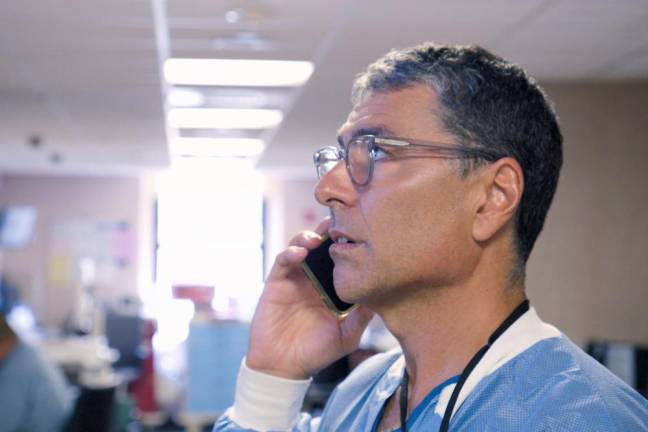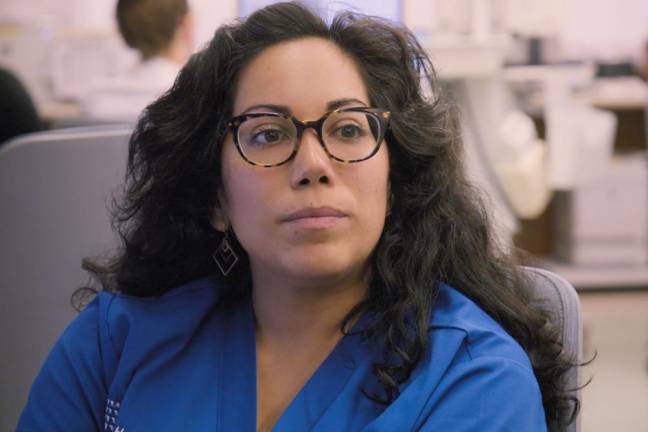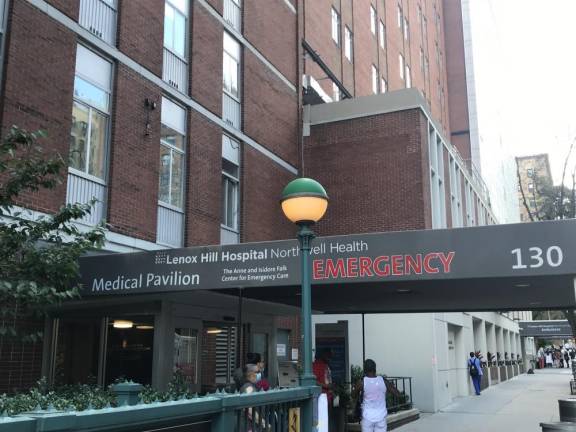Behind the Scenes of ‘Lenox Hill’
The real-life doctors of Netflix’s hit series talk about filming the show, their patients - and adding an extra coronavirus episode



New York City is the fifth character in “Lenox Hill,” the Netflix docuseries that dropped last month.
At least that’s the view of Dr. David Langer, the chair of neurosurgery at Lenox Hill, part of Northwell Health. And Langer should know. He’s one of the four main real-life characters in the dramatic look at a big-city hospital system.
He credits directors Adi Barash and Ruthie Shatz, who edited deeply-felt portraits of the series protagonists and the patients they serve. “They were creating fiction out of nonfiction,” Langer says. “The relations we had with them and the trust we had with them allowed us to be ourselves. We weren’t faking anything. We weren’t imitating anything.”
Variety said the series was “among the best shows released so far this year.” Still, Langer seems surprised by the passionate reactions of his new fans. He says that he and another docuseries subject, Neurosurgery Vice-Chair Dr. John Boockvar, were eager to show smart students that medicine is a worthy career. “It should be a consideration of our best and brightest young people,” says Langer. In “Lenox Hill,” he comes across as particularly able to communicate clearly and warmly with his patients.
The doctors wore microphones and got used to having cameras around. “You’re aware that they’re there,” Langer says. “It’s not so much the lack of awareness. It’s the lack of caring.”
Two of the four newly-minted TV stars were pregnant: Dr. Amanda Little-Richardson, the chief resident of obstetrics and gynecology, who is seen giving birth, and Dr. Mirtha Macri, an emergency medical specialist at the Lenox Hill outpost in Greenwich Village. Macri remembers meeting early on with the filmmakers. “I liked their approach and their personalities,” Macri recalls. She screened the team’s earlier Israeli series, which hit similar themes about the disparities in, and challenges within, health care.
The new show is already enough of a hit to inspire talk of another season. Last week filmmaker Shatz told the Associated Press that there are more stories to tell. “Oh, definitely,” she said. “There is a huge stream of stories and things we can touch.” She explained that there were a lot of things she wanted to touch on in the first season, but she had to hold back other material to contain the storyline and keep it focused.
On screen, Macri comes across as a warm truth-teller, an advocate for patients, whether they’re insured or not. “I am myself in the series,” Macri says. “I truly work and I truly act that way with my patients—it’s not acting.”
Stresses of City Life
The show chronicles harrowing life-and-death brain surgeries at the Upper East Side hospital, and how the doctors care deeply about their patients. But “Lenox Hill” doesn’t underscore as many of the life-and-death cases that come to an emergency room, Marcri explains, mostly because it’s impossible to get approval from patients or their families for an upcoming TV appearance while being right in the middle of, say, a heart attack.
“I wish I had emphasized a little bit more why I wanted to be in the series,” Macri says, stressing it’s all about her patients. “They wanted to tell their stories. The more important part of the series is some of the patients’ stories.”
Macri lives in New Jersey, but she wrestles in the show with themes familiar to many New Yorkers. She talks one frustrating evening about the stresses of city life, and how it can be daunting. Later, during a colorful episode shot during summertime Pride events, she celebrates Manhattan’s excitement and diversity. Post-series, even as she prepares to have a second baby, she says the Covid crisis means she’s not going anywhere. She’s been impressed with how the community has responded.
“That’s why I can’t leave New York City now,” she says. “I think New York City did an unbelievable job of fighting the virus.” The virus itself inspired a ninth episode of the initially eight-episode program. In March, even as the directors were finishing up their show, Langer called Barash and Shatz and told them that the virus was racing through the city like a forest fire. “What’s going on here is crazy,” he remembers telling them. “You’ve got to get the cameras in here.” And they did, adding an extra episode on June 24.
That 31-minute episode, called “Pandemic,” features Langer holding an iPhone in a patient’s hospital bed, serving as a link between family members not allowed to visit and a critically ill patient. He says on screen, “Honestly, I don’t think I’ll ever be the same, in a good way,” and now thinks that turned out to be true. Langer tends to think more these days about medical needs beyond his own hospital’s doors, he says.
In “Pandemic,” Macri has an evening shift so grueling that she says she actually can’t talk about it. The cameras follow her home to see her being welcomed by her dogs, but no other family members because of quarantine conditions. She tells the cameras in the virus-themed episode: “I trained my whole life for this.”
In March, Langer called [the directors] and told them that the virus was racing through the city like a forest fire. “What’s going on here is crazy,” he remembers telling them. “You’ve got to get the cameras in here.”